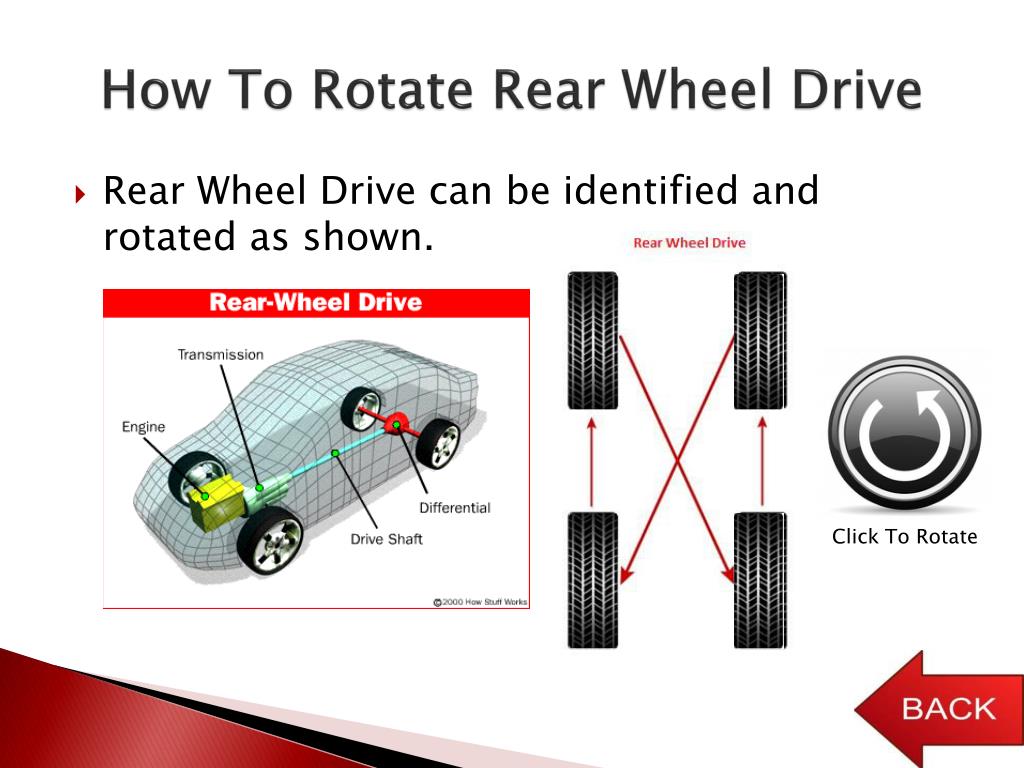Car maintenance is an essential aspect of owning a vehicle. Tire rotations are one of them, which you can get at all Discount Tire stores.
So, how much is a tire rotation at Discount Tire?
Tire rotations at Discount Tire costs around $15. Also, if you need a Discount Tire wheel balance or tire rotation for the tires bought from them, it’s free.
Go to any Discount Tire stores, and you’re all set and ready. So, now you know the service price for a tire rotation at Discount Tire.
Table of Contents
In most stores, the tire rotation service fee is about $24-$50. Some auto shops might even charge you upwards of $120. You usually pay with how much additional services you’re getting.
You’ll get a slightly lower price at $15 per tire in a Discount Tire shop. However, if you purchase your tires there, you’ll get free rotations for the tires.
Promos like these are usually the case as well in other auto-shops. But, the $15 price at Discount Tires is still substantially better than the more expensive price points.
You also have the option of using a coupon when you want to get lower prices on other services. So, save those coupons and get more services at a budget-friendly price.
What’s better than a cheap tire rotation? A free one! Through various Discount Tire services, you’ll get them at no additional charge.
If you bought your tires or wheels at Discount Tire, they’d offer you a free tire rotation or balance. Even buying new wheels should cost less.
Just bring your vehicle there and follow some instructions, and you’re good to go. Don’t forget to bring your receipt for some extra proof that you bought your tires at Discount Tire.
Don’t forget to bring your receipt for some extra proof that you bought your tires at Discount Tire.
Yes, But before rotating those tires at home, you should know whether your tires are classified as directional or non-directional tires.
Switching your front tires with your rear tires and vice versa is the way to rotate directional tires. The tires you exchange must be on the same side.
Instead of rotating a directional tire with the same side pattern, you should employ a criss-cross pattern when rotating a non-directional tire.
Tools needed:
Step 1: To maintain safety throughout the procedure, make sure that you apply the parking brake.
Step 2: On your wheels, remove all of the lug nuts. Doing this makes removal simpler when your car is raised,
Step 3: With a jack, elevate your car and use jack stands or blocks to maintain its raised position. Then, repeat on the other sides and rotate according to a tire’s directional or non-directional characteristic.
Some people use four jacks to lift their car off the ground completely, but I don’t recommend this because it can lead to accidents.
Step 4: Upon completion. Slowly descend your car while ensuring that all the lug nuts are secured as tightly as possible. You’re done at that point!
When should I opt for a tire rotation in Discount Tire?
Discount Tire recommends always opting for a Discount tire free rotation every 6,000-8,000 miles. Doing this ensures that your wheels are in excellent shape and wear evenly.
Doing this ensures that your wheels are in excellent shape and wear evenly.
While you’re there, consider also balancing your wheels or checking your tire pressure so you’ll get the most out of your tire maintenance needs.
However, the best way is to still check your owner’s manual for more accurate information.
Can I do tire rotations by myself?
The short answer is yes. Tire rotations can be an essential part of personal car maintenance. Not only would this save you money, but it can expand your knowledge on how to take care of your car correctly.
How long does a tire rotation take?
Tire rotations won’t take much from your day. Typical tire rotations without complications should only take about an hour at auto shops. However, if you do tire rotations by yourself, it could take a bit longer than usual, depending on your car maintenance skills.
How long can you go without a tire rotation?
Most tire manufacturers recommend rotating your tire every six months or every 7,500 miles of distance. Doing this ensures your tires are in optimal shape, so performance is not compromised.
Doing this ensures your tires are in optimal shape, so performance is not compromised.
What happens if I don’t rotate my tires?
Typically, tires can last 60,000 miles of travel, provided they are well maintained and away from hazards like sharp objects or rough roads.
If you neglect tire rotations from your service maintenance, the uneven wear and tear could cause your tires to lose 17% of their life, roughly 10,000 miles.
Worn tires can also pose a danger when driving. The lack of traction can severely affect your handling, especially on wet surfaces. Drive safer, and don’t forget to rotate your tires.
To sum it up, tire rotations are a cheap and highly effective car maintenance method. Moreover, there isn’t a downside to doing them; the most you can lose is an hour of your time.
Moreover, there isn’t a downside to doing them; the most you can lose is an hour of your time.
Tire rotations stretch the life of your tires and make for safer driving conditions on the road. So take an hour or two out of your weekend to do them yourself. Or, make a trip to Discount Tire for a pro to do it for you.
Either way, you can’t lose with tire rotations. I hope this article has shed some light on the itching question, “how much is a tire rotation at Discount Tire?”
One of the best things you can do to improve wear on your tires is to rotate your tires and what better place to do it than Discount Tire. If you bought your tires from them the rotation is free along with tire balancing. If you did not buy your tires from Discount Tires you can still get the same tire lifetime service for $22 per tire.
What's In This Guide?
Discount Tire offers free rotation and wheel balance for any customers that have bought tires from them.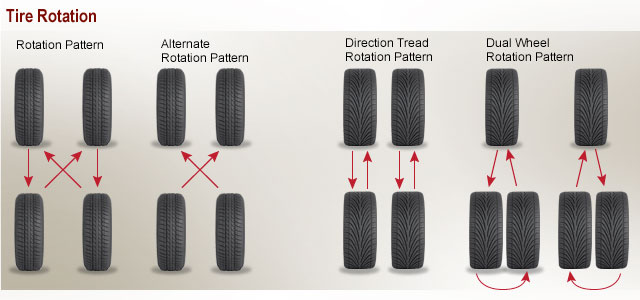 Though their policy is to only provide this free service to returning customers, they are known to sometimes not charge for a tire rotation.
Though their policy is to only provide this free service to returning customers, they are known to sometimes not charge for a tire rotation.
If they do charge you, which they will most likely do if you have not bought your tires from them, they offer a lifetime of tire maintenance service which includes balance and rotation in addition to TPMS Rebuild kits (or rubber valve stems), flat tire repair, air pressure checks, and tire condition inspections, all for the price of $22 per tire.
If your tires did not come with a warranty like the above from the tire dealership, then this is not a bad deal. On average a set of tires will be rotated around 10 times. At an average of an hour per rotation, you are paying around $8.8 per rotation which is more expensive than say Walmart, however; you get all the other benefits included in the package.
What Is a Tire Rotation?I once had someone tell me that their tires rotate plenty when they drive.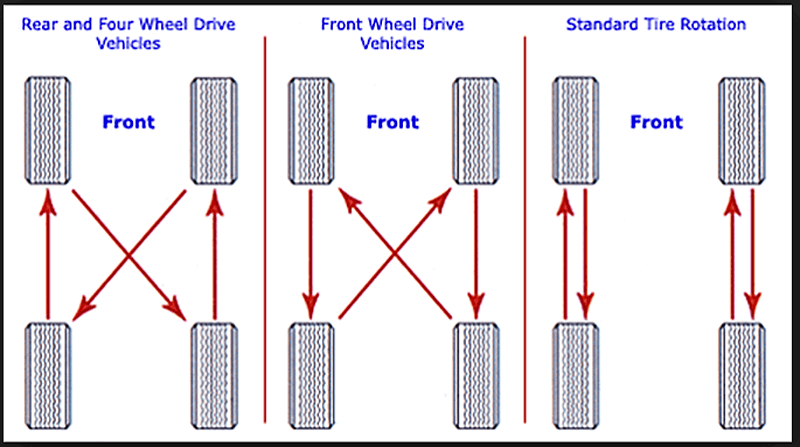 Though a good joke, this is not what is meant when talking about rotating tires. When you rotate your tires, you are switching the tires’ positions with each other.
Though a good joke, this is not what is meant when talking about rotating tires. When you rotate your tires, you are switching the tires’ positions with each other.
There are a few different ways in which tires are swapped, most common is the front to back and the back to front but crossed over. Others include the straight front to back, left to right, back to front and front to back but crossed, and variations of these but involving a full-size spare tire.
Why Should You Get Your Tire RotatedTire rotations are done in order to prolong the tread life of your tires. But why does this help? Aren’t all four tires on the same road anyway, all going at the same speed? Well, yes, but your wheels have different jobs.
The front wheels are always used for turning, and depending on your vehicle, some or all of your wheels deliver power from the engine to the road surface. Additionally, the braking percentages are different for each wheel, again depending on what kind of drive system your vehicle has.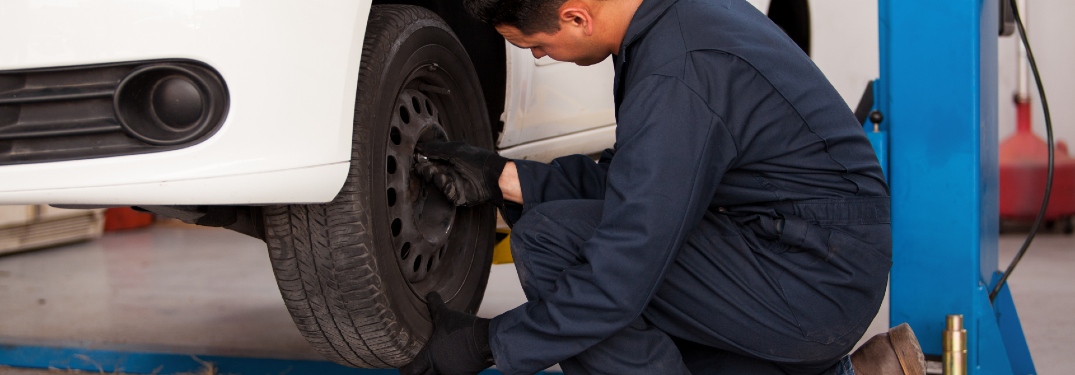
For example, the front-wheel-drive car typically has 80% braking in the front and 20% in the rear. All these factors affect your tires in different ways. Your driving tires will always experience more wear due to putting down the power and because they usually have a higher percentage of braking.
Your tires also experience a different kind of wear when used for turning. The outer edge of the tire will be worn away much faster compared to the more even wear of rear-wheel tires. All in all, your front tires will most likely be worn out before your rears.
Rotating your tires will not only result in a more even level of wear but also a more uniform wear pattern across all tires. So how often should you rotate your tires?
How Often Should You Get Your Tire Rotated?A good rule of thumb is that every time you get your oil changed, you should rotate your tires. But how many miles does that translate to? A few years ago, you had to get an oil change every 3,000 miles, however, with modern lubricants, that number has been increased substantially.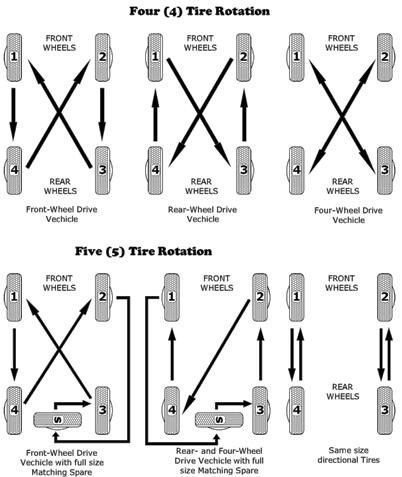
Today, oil servicing is recommended by manufacturers at around 5,000 to 7,500 miles. This number can even be double that at 15,000 miles if your vehicle takes full-synthetic oil. Synthetic oil’s mileage is quite high for rotating your tires, however, if your driving style isn’t too aggressive, then the average mileage of 5,000 to 7,500 miles is a good rotation cycle.
Unfortunately, that average distance does not apply to all vehicles. For front-wheel drive (FWD) and rear-wheel drive (RWD) vehicles, this amount does hold true, however, all-wheel drive (AWD) and four-wheel drive (4WD) vehicles’ tires need to be rotated more frequently. Typically, between 3,000 and 5,000 miles.
This means that if you are driving an FWD or RWD vehicle you can get your tire rotated every time you get an oil change. But, if you are driving a 4WD or AWD vehicle, you might want to get your tires rotated in between oil changes as well as when you get an oil change.
Are There Any Negatives to Getting Your Tires Rotated at Discount Tire?There have been some complaints online about Discount Tire’s free tire service that has me a little worried. Though I have not experienced this myself from Discount Tire, I have experienced the following at other establishments. Luckily, I am a mechanic so I could pick up on it.
Though I have not experienced this myself from Discount Tire, I have experienced the following at other establishments. Luckily, I am a mechanic so I could pick up on it.
People online say that there is no such thing as “free” service from Discount Tire. That they will always poke and prod your vehicle for issues so they can offer to fix it and make a buck. I’m sure that anyone that has gone to Jiffy Lube knows what I’m talking about.
That being said, not every location will do this, there are always going to be a bad apple in the bunch, it doesn’t mean that all companies or shops do it.
ConclusionIn conclusion, Discount Tire will balance and service your tire for free if you bought your tires from them. If not, you can still go to them, but you’ll most likely have to buy the $22 per tire care package. This is pretty cheap when you do the math of total tire rotations and all the other services that come along with the package.
Monday, October 10, 2016 13:31:16 Europe/Moscow
Car tire wear cannot run evenly : Front tires tend to wear much faster than rear tires. There are several reasons for this. So, most often the front axle of the car is loaded more than the rear (mostly it accounts for about 60% of the mass of the car). The front tires are subject to wear when maneuvering and also wear due to non-zero camber and toe settings. In addition, tire wear is not least influenced by the type of vehicle drive: the drive axle causes the tires to wear out faster. Due to the rotation (rearrangement) of the wheels, it is possible to achieve their more uniform wear and, as a result, life extension .
There are several reasons for this. So, most often the front axle of the car is loaded more than the rear (mostly it accounts for about 60% of the mass of the car). The front tires are subject to wear when maneuvering and also wear due to non-zero camber and toe settings. In addition, tire wear is not least influenced by the type of vehicle drive: the drive axle causes the tires to wear out faster. Due to the rotation (rearrangement) of the wheels, it is possible to achieve their more uniform wear and, as a result, life extension .
There is another equally obvious benefit of wheel rotation: Tires with the same tread depth provide more comfort and safety . This is especially important when it comes to difficult weather conditions. For example, the most worn tires are more prone to hydroplaning.
How to properly rotate the wheels? It is perhaps better to build on the type of tires installed on your car.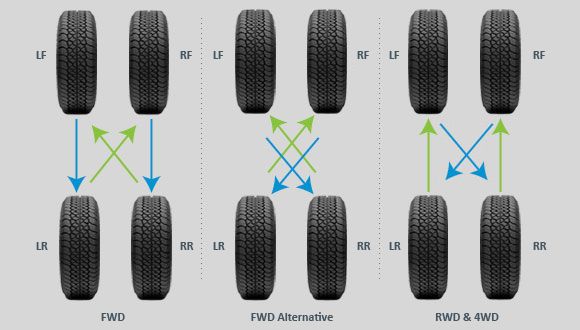 nine0003
nine0003
The most popular type of civilian tire tread at the moment is asymmetric . For example, most models of the MICHELIN summer line have this, ranging from the economical Energy Saver to the sporty Pilot Super Sport. When installing asymmetric tires on rims, it is necessary to align the front side of the tire with the front side of the rim : for this, the sidewalls have the inscriptions Outside and Inside (outer and inner side of the tire) and there is no arrow for the direction of rotation. The convenience of this type of tread is that the assembled wheels can be interchanged in any way: the outside of the tire will remain the outside anyway . In this case, it is appropriate to use any of the rotation methods. Usually, the most suitable way to rearrange the wheels is indicated in the car's operating instructions, but if there is none on hand, then you can choose one of the methods we have proposed.
The front left wheel is interchanged with the rear right and the front right with the rear left. This type of replacement is suitable for any type of vehicle drive and is most preferred for all-wheel drive vehicles. nine0003
The rear wheels are moved to the front axle (the right rear wheel is replaced by the right front wheel, the left rear wheel is replaced by the left front wheel), while the front wheels are replaced by the rear wheels diagonally (the right front wheel is replaced by the left rear, left front - in place of the right rear). This method is suitable for cars with rear and all-wheel drive.
The front wheels are installed in place of the rear wheels (the right front wheel is in place of the right rear wheel, the left front wheel in place of the left rear wheel), and the rear wheels, in turn, are moved diagonally to the front axle (the right rear wheel is placed in place of the left front, left rear - in place of the right front). This method is for front wheel drive vehicles. nine0003
This method is for front wheel drive vehicles. nine0003
This type of tread pattern is mainly found on off-road and commercial tires. In the MICHELIN line, for example, the Agilis+ and Latitude Tour HP tire models are of this type. The rotation of tires with a symmetrical tread pattern is exactly the same as the method described above for asymmetric non-directional tires. There is only one difference in the operation of such tires: when assembling the wheels, it is not necessary to take into account the position of the outer and inner sides of the tire.
Such tires are becoming less and less common in summer tires and almost always in winter: V-shaped tread allows the most effective removal of water from the contact patch. So, in the MICHELIN model range, CrossClimate summer tires and a number of winter tires (X-Ice North 3, Latitude X-Ice 3, Alpin 5, etc. ) have a directional tread pattern. Rotation with directional tires mounted on disks can be done in only one way: by swapping the front and rear wheels, i.e. the front left wheel in place of the rear left, the front right in place of the rear right. nine0003
) have a directional tread pattern. Rotation with directional tires mounted on disks can be done in only one way: by swapping the front and rear wheels, i.e. the front left wheel in place of the rear left, the front right in place of the rear right. nine0003
As the name implies, in addition to the outer and inner side, the tire tread pattern has a directional pattern. This type of tire is used only in motorsport due to the inconvenience of use, high cost and lack of tangible benefits for civilian use. Rotation with such tires is carried out in the same way as in the case of symmetrical directional tires: the front and rear wheels of each side of the car change places with each other. nine0003
Many sports cars are sometimes fitted with different size wheels: the rear tires are usually wider and larger in diameter. If the tires have an asymmetric non-directional tread pattern, then the wheels on each of the axles can be interchanged, but if we are dealing with directional tires, then alas, the rotation of such wheels without tire fitting is impossible.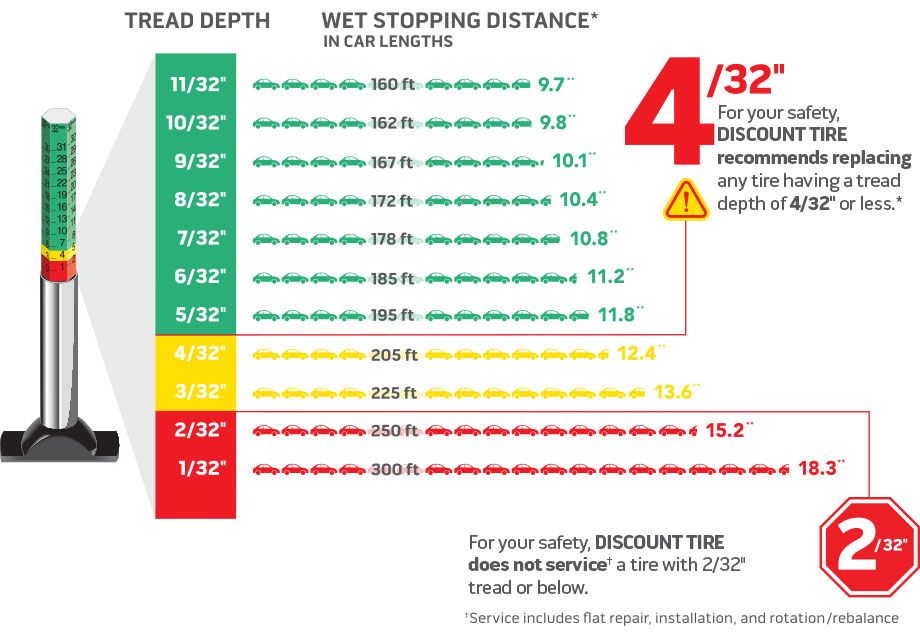
This type of rotation allows to extend the life of the wheels by about 20% , but in reality this method is almost never used: many modern cars either don’t have a spare wheel in the trunk at all, or use a small “stowaway” as it. And even if your car is equipped with a full-size spare wheel, in practice it most often differs in either tire model or wheel type. However, if the spare tire is completely identical to the wheels installed on the car, then rotation in this case can be extremely useful. For ease of changing wheels, the type of tread pattern should be either asymmetric non-directional or symmetrical non-directional. The rotation process in this case is no longer as obvious as in the previous methods. nine0003
The front right wheel is removed in place of the spare tire, the spare wheel is installed in place of the rear right wheel, the rear right in place of the front left, the front left in place of the rear left, the rear left in place of the front right.
The spare wheel is installed in place of the rear right wheel, the rear right in place of the front right, the front right in place of the rear left, the rear left in place of the front left, and the front left wheel, in turn, is retracted onto spare place. nine0003
The more often you change the wheels, the more evenly the tires will wear . But, since it is quite troublesome to do this too often, experts advise changing the wheels during periodic maintenance - when the car is somehow lifted onto a lift. As a rule, mileage of 8-10 thousand km is quite enough for the next rearrangement of wheels: in such a simple way, you can not only extend the life of tires, but also keep the driving safety at the proper level.
Introduction
What is the feature of the directional tread pattern?
Advantages and disadvantages of
directional tiresHow to properly install directional tires
Conclusion
When choosing good tires, you often face the problem of not only a huge number of models, but also a variety of tread patterns, which also need to be sorted out.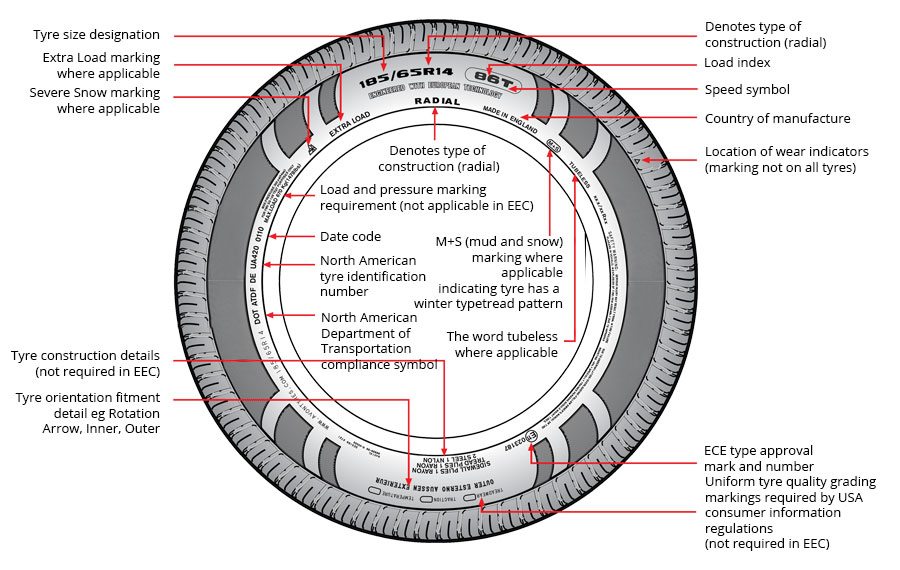 One of the most popular patterns is the traditional directional pattern, which has been used on the tread surface of a wide variety of tires for decades.
One of the most popular patterns is the traditional directional pattern, which has been used on the tread surface of a wide variety of tires for decades.
What are directional tires and why are they still in demand not only among motorists, but also among professional motorcycle racers? In the article, we will reveal all the secrets and technologies of directional tires, as well as show you how to install them correctly. Here, nuances and discoveries await us at every step. nine0003
There are four types of car tire tread pattern:
directional symmetrical,
non-directional symmetrical,
non-directional asymmetrical,
directional asymmetric.
Each drawing is created for its own version of the road and has its own set of advantages. Different tread patterns have different functionality and behavior on the road. When mounting tires on wheels, their own installation principles also work, which will need to be strictly observed so as not to create an emergency. We will talk about them in the corresponding section. nine0003
We will talk about them in the corresponding section. nine0003
The essence of the directional tread design is clear at a glance: the blocks, ribs and tread grooves of the V-pattern are directional, spinning the wheel in a certain direction. Most often, directional tires are found in winter models, but there are many of them among summer ones. In symmetrical tires, both halves of the directional tread are mirrored, in an asymmetric design, both halves have a different structure and different functionality.
It is necessary to mount the wheels only in the right direction, otherwise all the advantages will come to naught, and at the same time problems with handling and accelerated wear will be added. Excessive strong pressure will accumulate in the center of the working area, due to which the tire will begin to rise above the road and harm traction in how many areas. nine0003
The directional tread pattern performs best on wet asphalt trails, as the grooves that widen from the center to the side zones are much better at shedding water from the contact surface. This not only improves grip on wet surfaces, but also works in favor of protection against the effect of hydroplaning. This works even better for a rear-wheel drive car - the front wheels will quickly clear the water before the rear axle sets foot on the road. Accordingly, contact with the track in such a car will be much more thorough. nine0003
This not only improves grip on wet surfaces, but also works in favor of protection against the effect of hydroplaning. This works even better for a rear-wheel drive car - the front wheels will quickly clear the water before the rear axle sets foot on the road. Accordingly, contact with the track in such a car will be much more thorough. nine0003
The directional pattern of the winter models excels in raking snow and clearing dirt from the contact surface - ideal for snowy trails in the winter.
On a dry summer surface, they also give the car a couple of advantages - first of all, it concerns directional and lateral stability. For high-speed tires, this is one of the most relevant designs, as directional tires have a positive effect on the reactions of the car at high speed. nine0003
However, their driving disadvantage is the increased noise level during active work on asphalt, and the higher the speed, the stronger the rumble. Also, directional tires are more expensive than non-directional tires, but cheaper than asymmetric ones. It is better not to install directional tires if you often drive on dirt roads or are completely forced to drive off-road. They will not show effective work on soft and medium hard surfaces. For rural areas, a tread pattern with a non-directional arrangement of large lugs is better suited. Remember that, being put on disks, wheels with directional rubber can only be changed from the front axle to the rear and vice versa, but not rearranged on the sides. To do this, the tires will have to be disassembled and put as needed. nine0003
It is better not to install directional tires if you often drive on dirt roads or are completely forced to drive off-road. They will not show effective work on soft and medium hard surfaces. For rural areas, a tread pattern with a non-directional arrangement of large lugs is better suited. Remember that, being put on disks, wheels with directional rubber can only be changed from the front axle to the rear and vice versa, but not rearranged on the sides. To do this, the tires will have to be disassembled and put as needed. nine0003
Although we've talked about directional tires, it's the symmetrical design that's most common. Asymmetric directional pattern is very rare. This is due to the fact that such tires are not only much more difficult and expensive to manufacture, but they have one serious drawback for car owners. Due to the very strict installation scheme for the car, constant difficulties arose with spares - I had to constantly carry two spare wheels with me instead of one, because you never know which tire will be damaged, and you can’t change directional asymmetric tires with sides.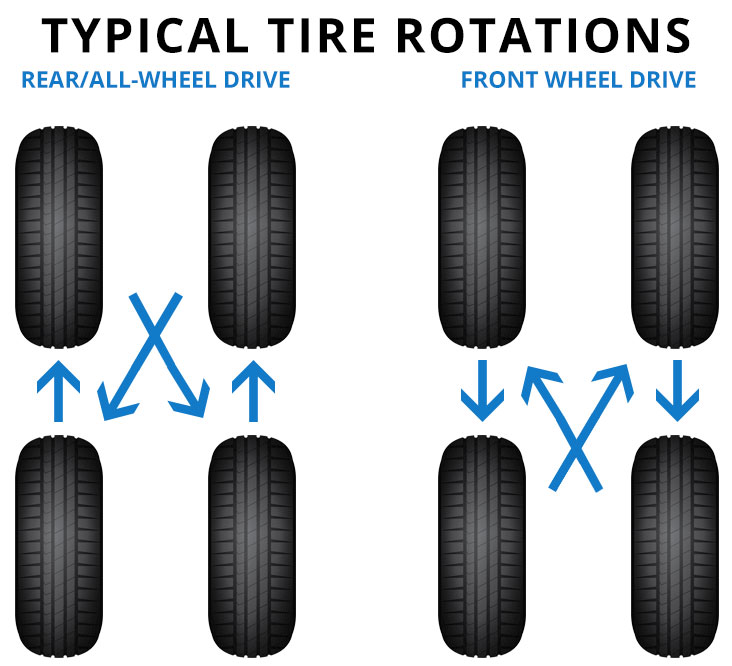 In addition, the warehouses constantly accumulated tires for only one side, which are completely useless without a paired wheel. nine0003
In addition, the warehouses constantly accumulated tires for only one side, which are completely useless without a paired wheel. nine0003
As mentioned above, one of the "secrets" of directional tires is their installation pattern. Simply put, you need to find the inscription Rotation (from the English. "Rotation") with an arrow on the sidewall. It is this marker that is an indicator - in which direction the tire pattern should “look” when installed on a car. If you make a mistake with the direction of rotation and put the rubber against the arrow, then the drainage system will rake in water like a mill, and not discard it, leveling all the advantages of the model, or even exacerbating them. The fact that the tires are installed incorrectly will tell you a sharply increased noise in the cabin. nine0003
If for some reason you could not find this marker, then you can do it even easier - pay attention to the tire tread pattern itself. The rubber of the directional design is a kind of "herringbone" that is directed forward. Simply mount the tires so that the tread pattern faces the direction of travel of the vehicle.
Simply mount the tires so that the tread pattern faces the direction of travel of the vehicle.
Rubber with an asymmetric device must only be mounted according to the marking, since each individual side is designed for its own tasks and should never be confused. The correct direction of asymmetric tires will help determine the labels:
Outside, or the outer side of the tire, must face outward.
Inside, or the inner side, respectively, looks inside the car.
Right and left asymmetric tires are much less common. Left (or simply L) will be written on one tire - it means that it must be placed to the left of the body, Right (R) - to the right. You can change them only on one side of the body - front with rear and vice versa. nine0003
But much more often, directional tires can be mounted on a rim on either side, the main thing is to follow the direction of the pattern.
And don't forget to balance freshly assembled wheels - tires will never reveal their advantages and characteristics without good balance.